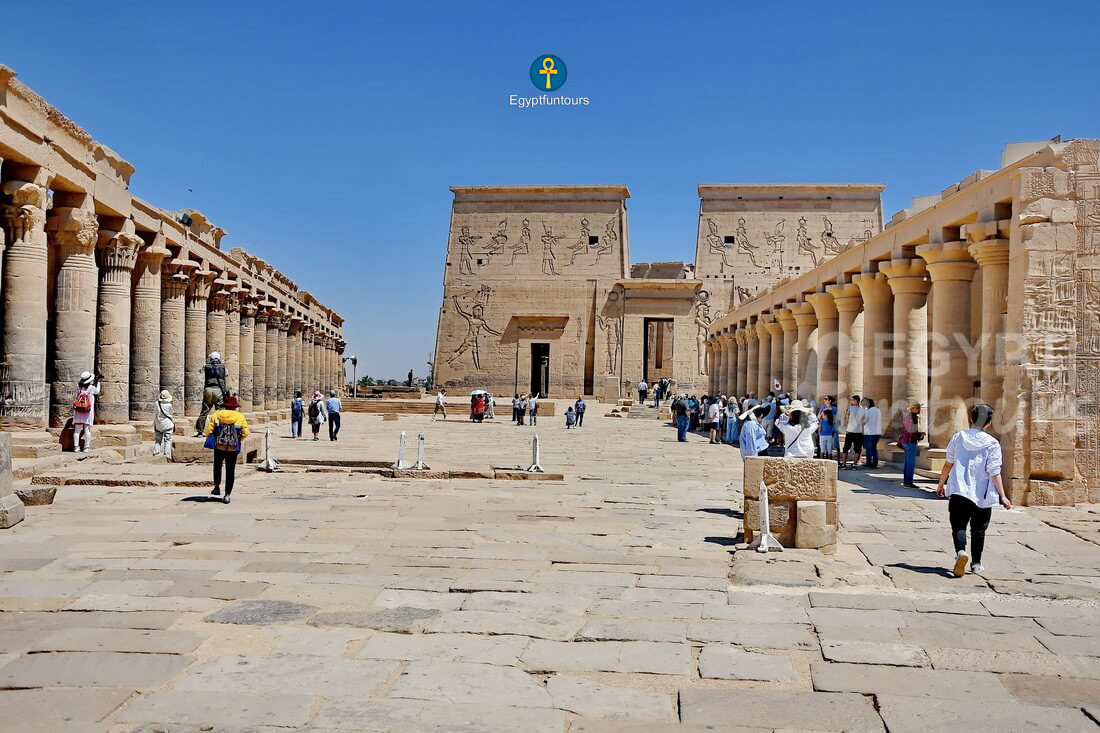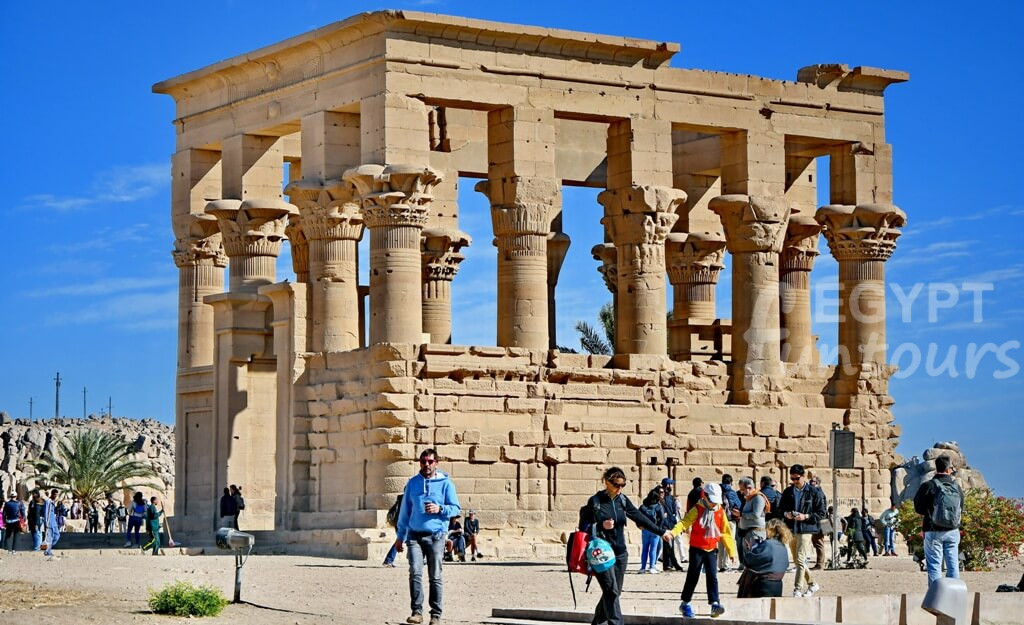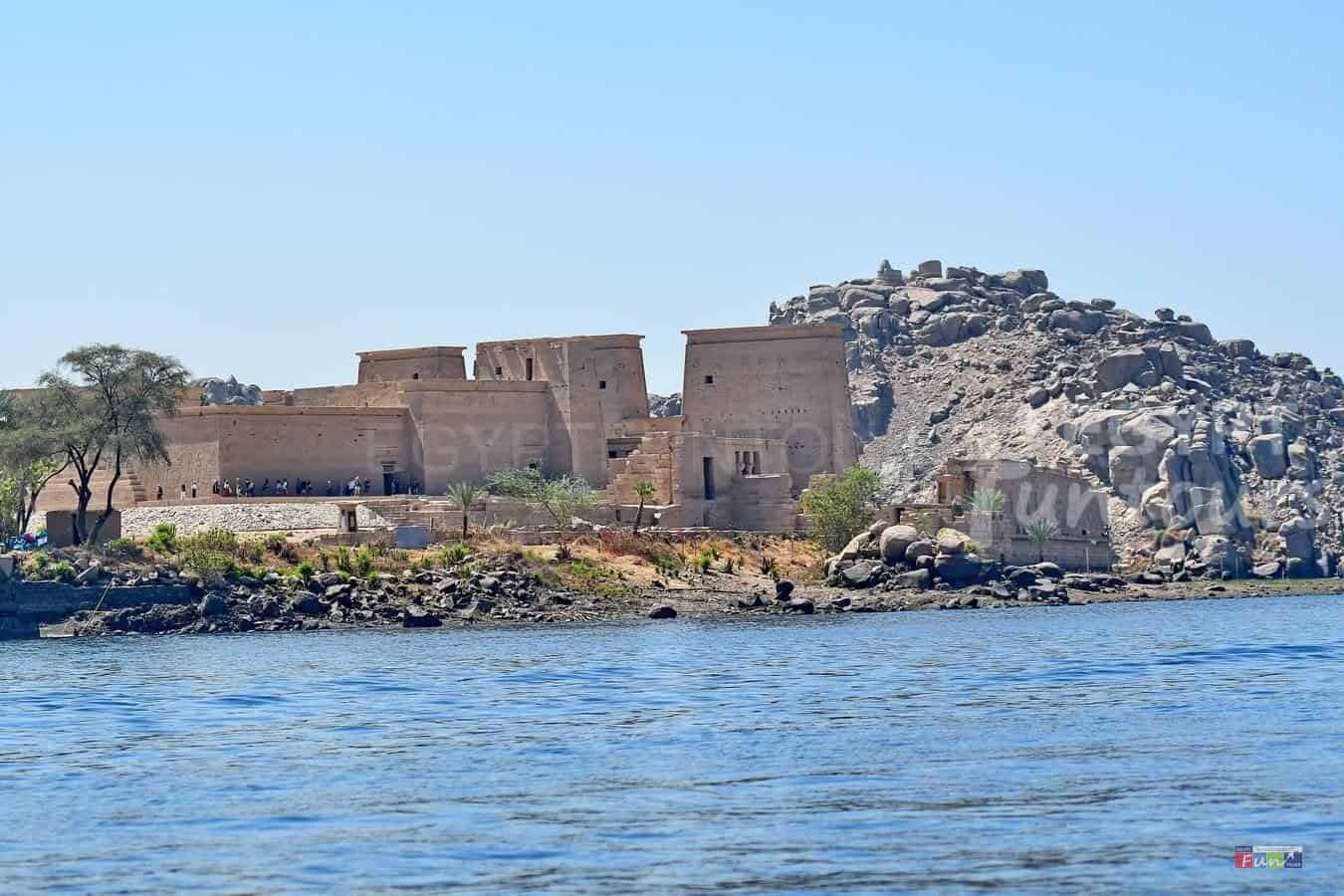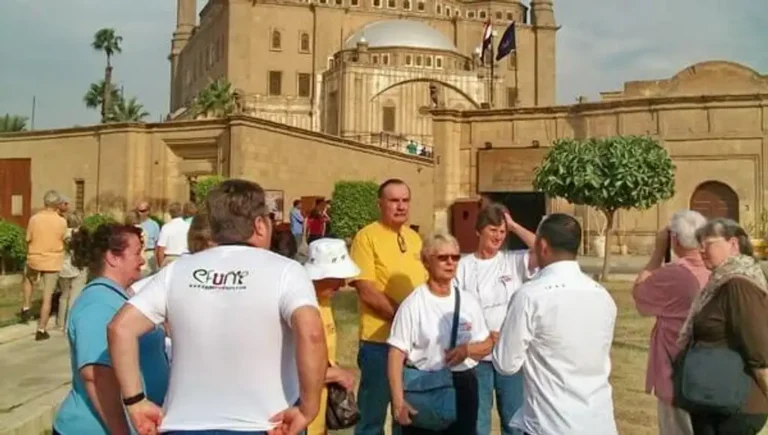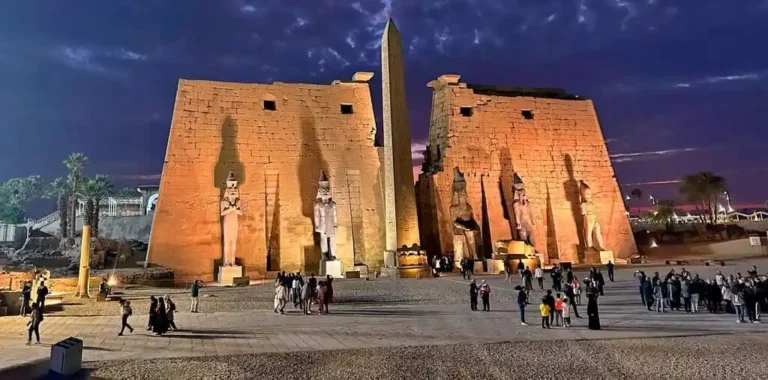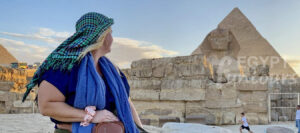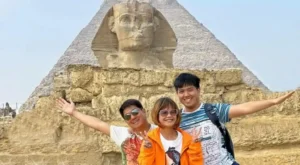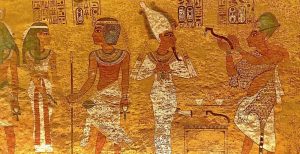Of all the monuments in Upper Egypt, none is more romantic or enchanting than the Philae Temple. This is not just a temple; it’s a breathtaking complex that appears to float on the water, a magical island sanctuary dedicated to the goddess Isis.
Located in the shimmering waters between the old Aswan Dam and the new High Dam, Philae is a “must-see” on any Aswan itinerary. Its perfect preservation, stunning location, and the incredible story of its rescue make it one of the most rewarding experiences in all of Egypt.


